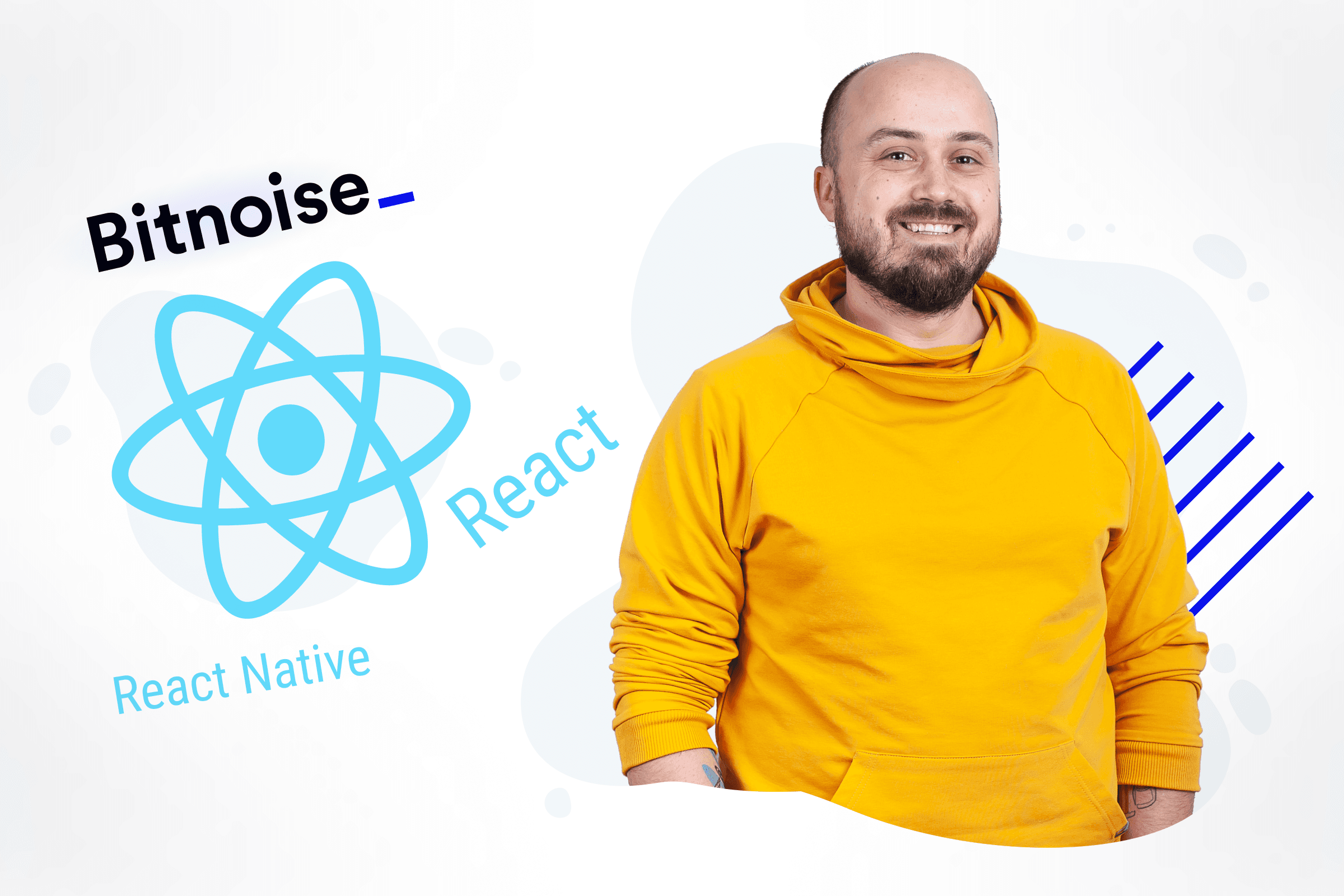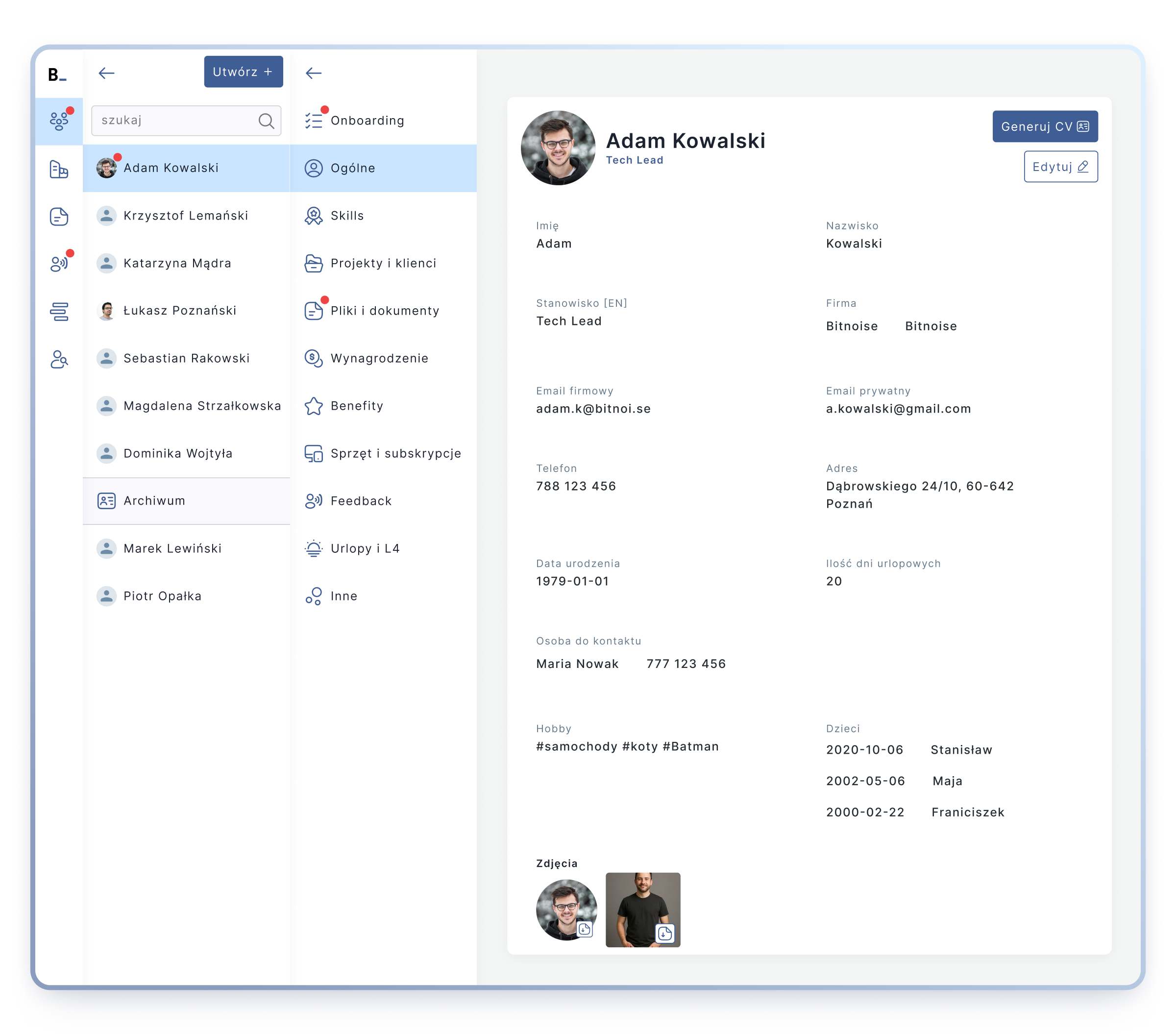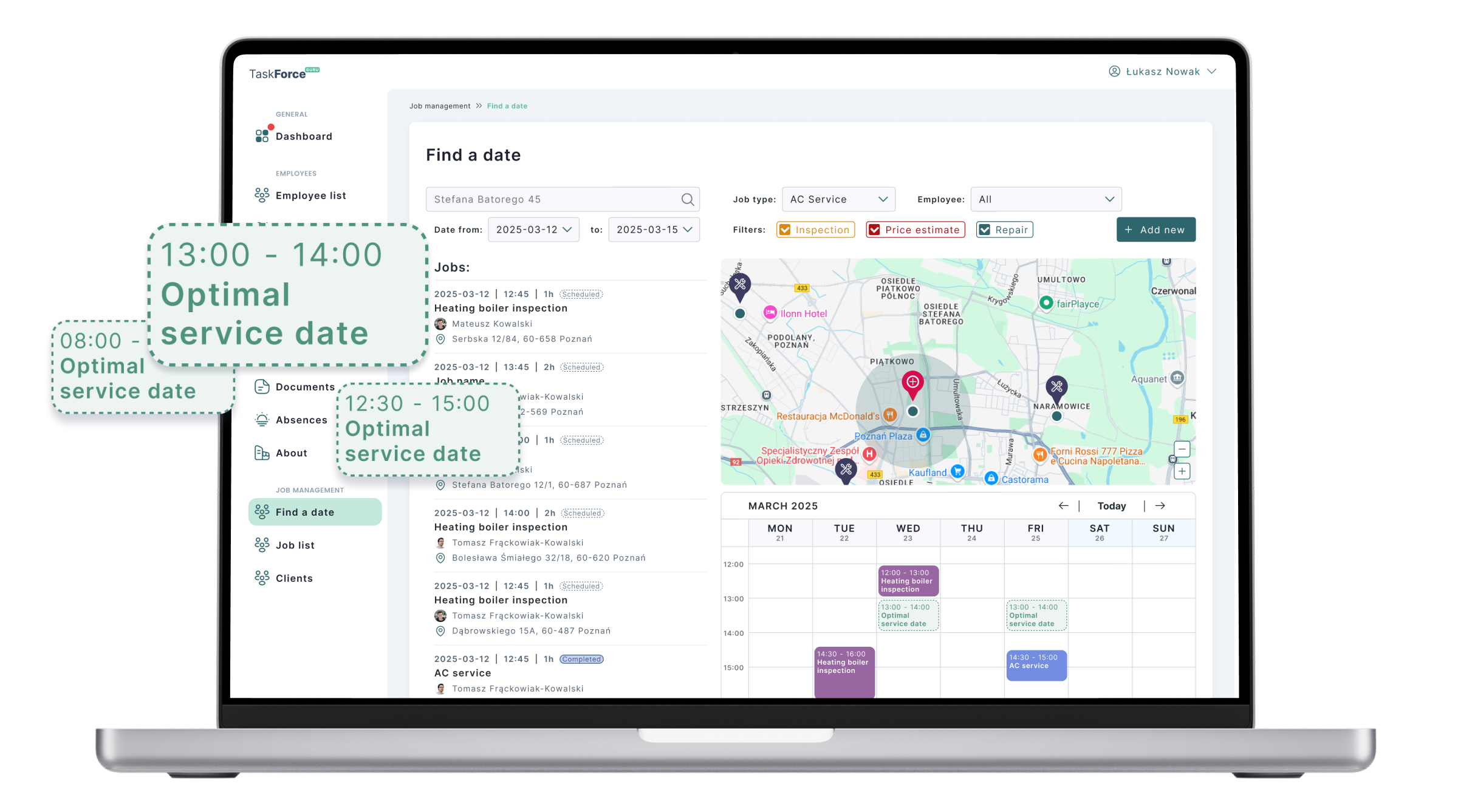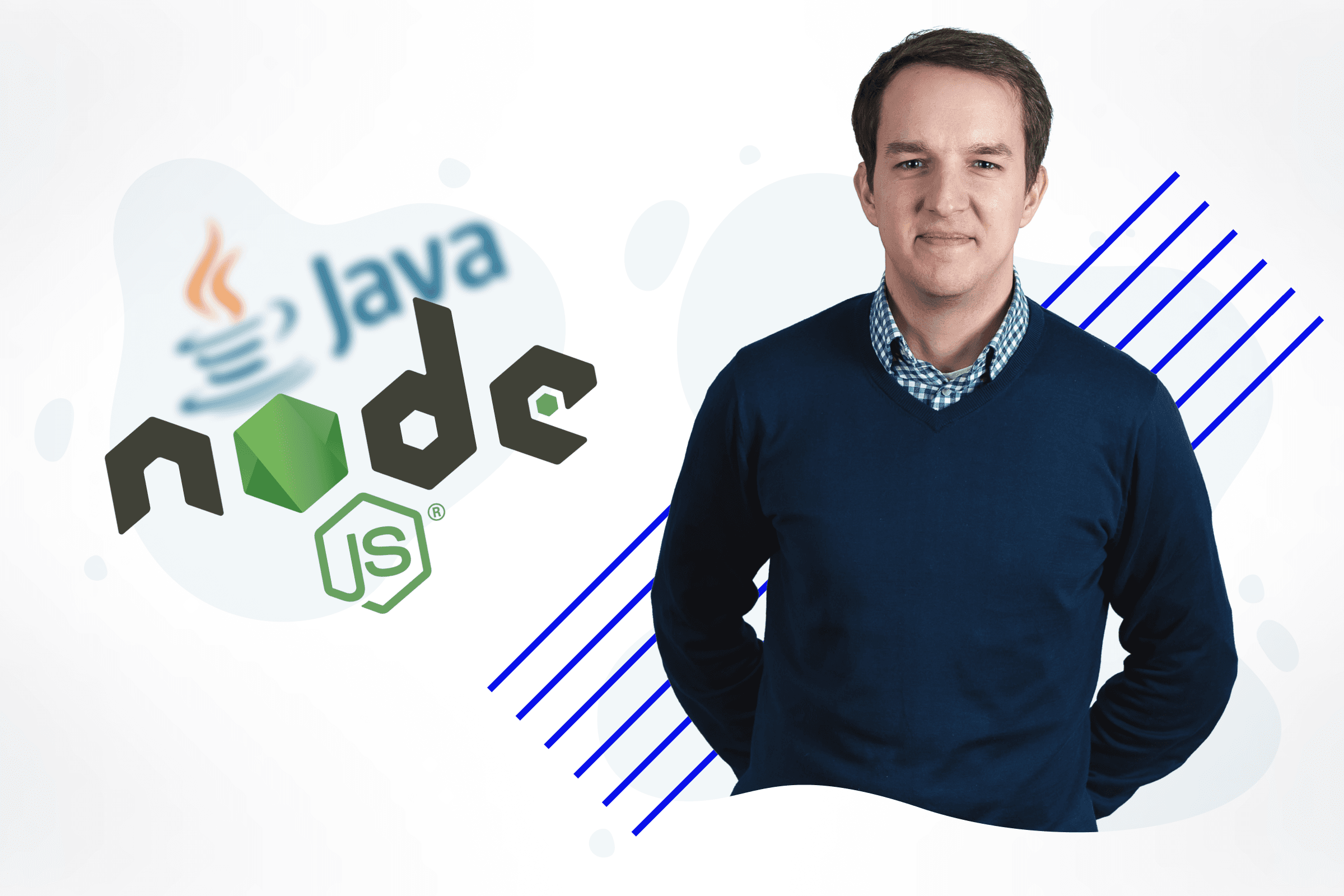
Post-Pandemic Growth
In response to the dynamic growth of the IT market in the post-pandemic period, our team experienced unprecedented expansion, a phenomenon common throughout the industry. Our existing manual methods for managing personnel and related data, while effective on a smaller scale, quickly proved insufficient in the face of growing operational complexity and employee numbers. Scaling these manual processes generated risks of errors, reduced efficiency, and hindered strategic resource planning.
Recognizing the Gap: The Search for Scalable, Tailored HR Management
We identified an urgent need to implement a centralized system to streamline key HR processes. The core requirements included secure storage of employee personal data in compliance with applicable regulations, precise cataloging of their technical and soft skills, and professional experience. Equally important was the ability to instantly update this information and automate the generation of competency profiles, essential for effectively allocating resources to new projects and responding to client inquiries.
We conducted an in-depth analysis of solutions available on the market. We found that the market was dominated by extensive HRIS (Human Resource Information System) platforms, which, although feature-rich, were disproportionately complex and costly relative to the current needs and scale of our organization. Implementing such a complex platform would involve inefficient resource utilization, lengthy implementation times, and a lack of the desired flexibility.
Developing a Homegrown HRIS Application
Consequently, we made the strategic decision to develop our own dedicated solution, precisely tailored to meet 100% of our specific requirements. This led to the creation of our internal application, informally nicknamed "HRIS" by the team. Its development was an iterative process – we successively expanded it with new modules, guided by ongoing operational needs. To the core database, we added functionalities for managing software licenses and assigned IT equipment, an integrated leave request handling system, a central repository for employee evaluations and feedback, a digital archive for employee documentation, and a module for recording salary history and tracking changes.
This application reliably supported our operations for a long time, proving its effectiveness, stability, and value to the organization. This internal success inspired us to consider its commercialization and make it available to other companies facing similar challenges. We began conceptual work on version 2.0, intending to release it to a broader audience in a SaaS model.

Reimagining the Product: A Strategic Pivot to Serve Field Teams
However, a series of internal strategic sessions, combined with market trend analysis, led us to reorient our plans. We decided on a strategic pivot, transforming the original HRIS concept into a solution with a much broader functional scope, addressing the needs of a specific, underserved market segment.
Thus, the concept for the TaskForce platform was born. Building on the proven foundation of human resource management, we enriched the system with modules dedicated to optimizing the work and management of field service teams – such as technical service engineers, assembly crews, installers, gardeners, and other specialists whose work involves performing tasks directly at the client's site or a designated location.

Key Functional Expansions
A key extension is the advanced order (task) management and scheduling module. It enables managers and dispatchers to efficiently plan tasks on an interactive calendar, dynamically considering critical parameters: job geolocation, required completion deadlines, priorities, necessary qualifications, and the availability of appropriate employees. This directly translates into optimizing travel routes, reducing operational costs, maximizing the utilization of working time, and enhancing the overall efficiency of daily field operations.
Furthermore, we have introduced a range of innovative functionalities aimed at streamlining and automating communication between end customers and service providers (e.g., technicians). Details of these solutions, which include notifications and job status updates, will be presented soon. Their purpose is not only to improve information flow and increase transparency but also to strengthen the client's relationship with the service provider company, building loyalty through convenience and proactive communication facilitated by the TaskForce system.

Next Steps
In the near future, we plan to conduct closed beta tests with a dozen carefully selected partner companies from various industries. After gathering and implementing their valuable feedback, TaskForce will be officially released to the wider market. Concurrently, we will continue to work on the further development of the system, implementing subsequent expansion phases according to the adopted roadmap and responding to user needs.


